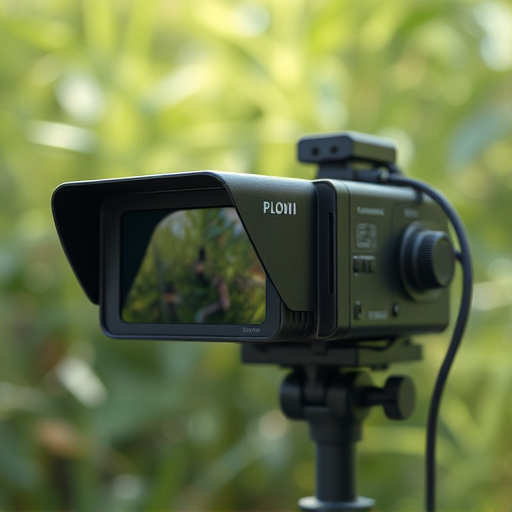Detecting wireless spy cameras with live phone viewing capabilities requires specialized tools like RF detectors, which can identify unique signals in 2.4 GHz and 5.8 GHz frequency bands. Initial detection is confirmed using thermal imaging or physical inspection, followed by signal strength recording and smartphone apps for accurate location via live viewing. Conducting an effective sweep involves calibrating the detector, scanning across the spectrum, and observing spikes. Pinpointing the camera's origin uses directional antennas, and safe removal requires strict protocols, documentation, professional disassembly, and evidence preservation to mitigate privacy risks.
Uncover hidden surveillance with our comprehensive guide to detecting wireless spy cameras. In today’s digital age, privacy is paramount. This tutorial equips you to identify and neutralise these covert devices using an RF (radio frequency) detector sweep. From understanding the technology behind wireless spy cameras to interpreting scan results, learn how to ensure safe removal of hidden sensors capable of live phone viewing. Get ready to safeguard your personal space.
- Understanding Wireless Spy Cameras and Their Detection
- Tools and Equipment Required for Camera Detection
- Step-by-Step Guide to Conducting an RF Detector Sweep
- Interpreting Results and Ensuring Safe Removal of Hidden Cameras
Understanding Wireless Spy Cameras and Their Detection
Wireless Spy Cameras, also known as hidden cameras, have evolved significantly in recent years, with many capable of transmitting live video feeds directly to a smartphone via Wi-Fi or Bluetooth connections. These devices are often used for surveillance and monitoring but can be a significant privacy concern. Understanding how they work is the first step in detecting and neutralizing them.
Detecting Wireless Spy Cameras involves using specialized tools like RF (Radio Frequency) detectors that can pick up on the unique signals these cameras emit. Since many spy cams operate in the 2.4 GHz or 5.8 GHz frequency bands, an RF detector can help identify their presence by scanning for these specific ranges. Once detected, further investigation using tools like thermal imaging cameras or physical inspection can confirm the exact location of the hidden camera.
Tools and Equipment Required for Camera Detection
Detecting hidden wireless spy cameras, like those capable of live phone viewing, requires specific tools and equipment to ensure success. The primary tool is a Radio Frequency (RF) detector, which can pick up signals from remote controls used by such devices. These detectors are sensitive enough to identify faint RF emissions, helping users pinpoint the exact location of hidden cameras.
Along with the RF detector, you’ll need a range of accessories. This includes an antenna to improve signal reception, especially in areas with obstacles or weak signals. A signal booster can also be useful for amplifying the detected signal, making it easier to identify and track the source. Additionally, consider having a notepad and pen for recording signal strengths and locations, as well as a smartphone app that can assist in visual confirmation of detected signals, further aiding in the detection process.
Step-by-Step Guide to Conducting an RF Detector Sweep
To conduct an effective RF (Radio Frequency) detector sweep for hidden cameras, follow this step-by-step guide. Begin by ensuring your device is properly calibrated and tested to detect wireless signals accurately. Next, switch on the detector and scan across the frequency spectrum, focusing on the range commonly used for spy cameras, typically between 2.4 GHz and 5.8 GHz. Observe any sudden spikes or consistent readings on the display, indicating potential hidden camera activity.
While scanning, consider moving the device in a systematic pattern, overlapping each sweep by 10-20% to ensure comprehensive coverage. If you identify a strong signal, pinpoint its origin using directional antennas and further investigate by attempting live phone viewing or accessing any associated apps for visual confirmation.
Interpreting Results and Ensuring Safe Removal of Hidden Cameras
Interpreting Results and Safe Removal
After completing a RF detector sweep, it’s crucial to understand the results. The detector will signal the presence of wireless spy cameras or hidden devices by picking up on their radio frequency signals. Pay close attention to any marked peaks or consistent readings in the detector’s display, which indicate potential hidden camera locations. These signals could be from live phone viewing devices, highlighting the need for thorough inspection.
Ensure safe removal by following proper protocols. Once a device is located, do not touch or manipulate it immediately. Document the findings using photography and note the exact positions. Engage a professional to handle the safe disassembly and disposal of the hidden camera to prevent any potential harm or data breach. This process ensures that all evidence is preserved and handled securely while maintaining your safety.
Detecting hidden wireless spy cameras is a crucial step in safeguarding your privacy. By understanding how these devices operate and utilizing specialized tools like RF detectors, you can effectively navigate and interpret results to ensure safe removal. Remember, staying informed about these advanced technologies empowers you to protect your personal space and maintain control over your digital life, especially when it comes to the Live Phone Viewing of sensitive areas.
